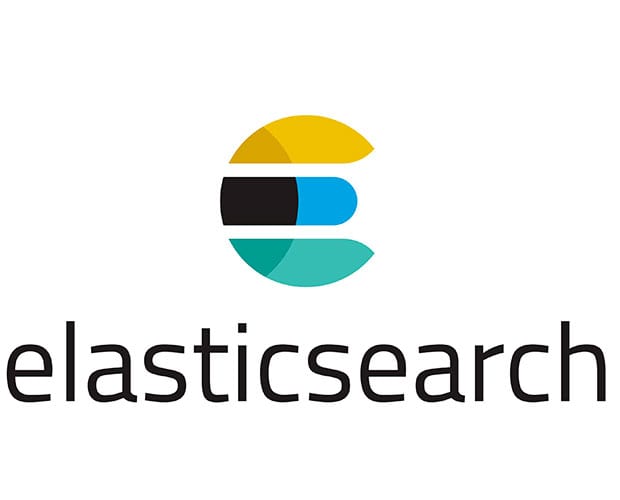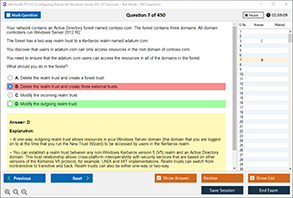
Elasticsearch from Scratch Complete Course
Best Seller
166 Lectures
11h 50m 9s
Prepare for your Microsoft examination with our training course. The No_code course contains a complete batch of videos that will provide you with profound and thorough knowledge related to Microsoft certification exam. Pass the Microsoft No_code test with flying colors.
$13.99$24.99
Curriculum For This Course
- 1. Introduction to Elasticsearch 5m 33s
- 2. Overview of the Elastic Stack 6m 5s
- 1. Introduction to this section 1m 12s
- 2. Nodes & Clusters 5m 1s
- 3. Indices & Documents 1m 32s
- 4. A word on types 1m 21s
- 5. Sharding 2m 56s
- 6. Replication 2m 43s
- 7. Keeping replicas synchronized 2m 34s
- 8. Searching for data 3m 14s
- 9. Distributing documents across shards 1m 16s
- 1. Installing Elasticsearch on Mac/Linux 5m 18s
- 2. Installing Elasticsearch on Windows 5m 33s
- 3. Configuring Elasticsearch 3m 41s
- 4. Installing Kibana on Mac/Linux 2m 49s
- 5. Installing Kibana on Windows 2m 40s
- 6. Configuring Kibana 2m 2s
- 7. Introduction to Kibana and dev tools 6m 34s
- 1. Creating an index 1m 32s
- 2. Adding documents 3m 47s
- 3. Retrieving documents by ID 1m 13s
- 4. Replacing documents 1m 26s
- 5. Updating documents 3m 39s
- 6. Scripted updates 3m 6s
- 7. Upserts 2m 29s
- 8. Deleting documents 3m 28s
- 9. Deleting indices 46s
- 10. Batch processing 5m 54s
- 11. Importing test data with cURL 2m 49s
- 12. Exploring the cluster 6m 50s
- 1. Introduction to mapping 1m 23s
- 2. Dynamic mapping 3m 53s
- 3. Meta fields 2m 47s
- 4. Field data types 13m 46s
- 5. Adding mappings to existing indices 1m 55s
- 6. Changing existing mappings 3m 49s
- 7. Mapping parameters 7m 57s
- 8. Adding multi-fields mappings 2m 38s
- 9. Defining custom date formats 5m 42s
- 10. Picking up new fields without dynamic mapping 7m 31s
- 11. Wrap up 37s
- 1. Introduction to the analysis process 1m 41s
- 2. A closer look at analyzers 4m 43s
- 3. Using the Analyze API 3m 28s
- 4. Understanding the inverted index 4m 31s
- 5. Overview of character filters 2m 34s
- 6. Overview of tokenizers 8m 34s
- 7. Overview of token filters 6m 24s
- 8. Overview of built-in analyzers 4m 58s
- 9. Configuring built-in analyzers and token filters 4m 40s
- 10. Creating custom analyzers 3m 11s
- 11. Using analyzers in mappings 3m 18s
- 12. Adding analyzers to existing indices 3m 27s
- 13. A word on stop words 1m 1s
- 14. Wrap up 1m 1s
- 1. Search methods 1m 49s
- 2. Searching with the request URI 3m 48s
- 3. Introducing the Query DSL 2m 20s
- 4. Understanding query results 1m 55s
- 5. Understanding relevance scores 9m 53s
- 6. Debugging unexpected search results 1m 41s
- 7. Query contexts 2m 26s
- 8. Full text queries vs term level queries 5m 56s
- 1. Introduction to term level queries 1m 10s
- 2. Searching for a term 2m 26s
- 3. Searching for multiple terms 1m 46s
- 4. Retrieving documents based on IDs 1m 5s
- 5. Matching documents with range values 3m 44s
- 6. Working with relative dates (date math) 7m 35s
- 7. Matching documents with non-null values 1m 57s
- 8. Matching based on prefixes 1m 17s
- 9. Searching with wildcards 2m 32s
- 10. Searching with regular expressions 2m 56s
- 1. Introduction to full text queries 2m 21s
- 2. Flexible matching with the match query 4m 43s
- 3. Matching phrases 1m 36s
- 4. Searching multiple fields 2m 36s
- 1. Introduction to compound queries 49s
- 2. Querying with boolean logic 10m 35s
- 3. Debugging bool queries with named queries 3m 14s
- 4. How the “match” query works 6m 25s
- 1. Introduction to this section 2m 14s
- 2. Querying nested objects 5m 49s
- 3. Nested inner hits 3m 57s
- 4. Mapping document relationships 2m 40s
- 5. Adding documents 6m 32s
- 6. Querying by parent ID 2m 49s
- 7. Querying child documents by parent 5m 12s
- 8. Querying parent by child documents 5m 53s
- 9. Multi-level relations 9m 39s
- 10. Parent/child inner hits 1m 58s
- 11. Terms lookup mechanism 6m 9s
- 12. Join limitations 1m 16s
- 13. Join field performance considerations 3m 57s
- 1. Specifying the result format 2m 59s
- 2. Source filtering 4m 23s
- 3. Specifying the result size 1m 33s
- 4. Specifying an offset 2m 7s
- 5. Pagination 5m 4s
- 6. Sorting results 5m 14s
- 7. Sorting by multi-value fields 2m 25s
- 8. Filters 3m 50s
- 1. Introduction to aggregations 2m 17s
- 2. Metric aggregations 8m 55s
- 3. Introduction to bucket aggregations 6m 23s
- 4. Document counts are approximate 6m 22s
- 5. Nested aggregations 5m 19s
- 6. Filtering out documents 2m 29s
- 7. Defining bucket rules with filters 3m 13s
- 8. Range aggregations 7m 24s
- 9. Histograms 7m 15s
- 10. Global aggregation 2m 57s
- 11. Missing field values 2m 25s
- 12. Aggregating nested objects 2m 14s
- 1. Introduction to this section 27s
- 2. Proximity searches 7m 15s
- 3. Affecting relevance scoring with proximity 5m 32s
- 4. Fuzzy match query (handling typos) 8m 47s
- 5. Fuzzy query 2m 31s
- 6. Adding synonyms 12m 8s
- 7. Adding synonyms from file 5m 38s
- 8. Highlighting matches in fields 6m 2s
- 9. Stemming 5m 23s
- 1. Introducing Application & Client Libraries 6m 40s
- 2. Adding a simple query 6m 30s
- 3. Paginating search results 8m 34s
- 4. Adding fuzziness 4m 48s
- 5. Aggregations & Filters 17m 36s
- 6. Adding product details page 3m 41s
- 1. Last words & summing up 47s
- 1. Introduction to this course 1m 6s
- 2. Introduction to Elasticsearch 3m 7s
- 3. Terminology 8m 16s
- 4. Installing Elasticsearch 3m 19s
- 5. Installing Kibana 4m 23s
- 6. Installing Sense 2m 59s
- 7. Creating an index 4m 2s
- 8. Deleting an index 1m 17s
- 9. Introduction to mapping 5m 1s
- 10. Field data types 13m 9s
- 11. Meta fields 6m 15s
- 12. Adding mappings 4m 13s
- 13. Adding test data 2m 22s
- 14. Adding documents 4m 34s
- 15. Replacing documents 1m 47s
- 16. Updating documents 2m 5s
- 17. Deleting documents 1m 13s
- 18. Batch processing 8m 1s
- 19. Retrieving document by ID 1m 40s
- 20. Introduction to searching 7m 15s
- 21. Searching with query strings: Basics 4m 21s
- 22. Searching with query strings: Bool query 4m
- 23. Searching with query strings: Phrase query 3m 20s
- 24. Searching with query strings: Remarks 1m 17s
- 25. Searching with Query DSL: Full text queries 5m 26s
- 26. Searching with Query DSL: Term level queries 7m 1s
- 27. Searching with Query DSL: Compound queries 7m 39s
- 28. Searching across indexes and types 8m 20s
- 29. Fuzzy searches 9m 21s
- 30. Proximity searches 5m 54s
- 31. Boosting 4m 27s
- 32. Filtering results 3m 8s
- 33. Changing the size of result sets 1m 51s
- 34. Pagination 3m 31s
- 35. Sorting results 2m 30s
- 36. Aggregations 13m 40s
Hot Exams
How to Open Test Engine .dumpsqueen Files
Use FREE DumpsQueen Test Engine player to open .dumpsqueen files


Your purchase with DumpsQueen.com is safe and fast.
The DumpsQueen.com website is protected by 256-bit SSL from Cloudflare, the leader in online security.
